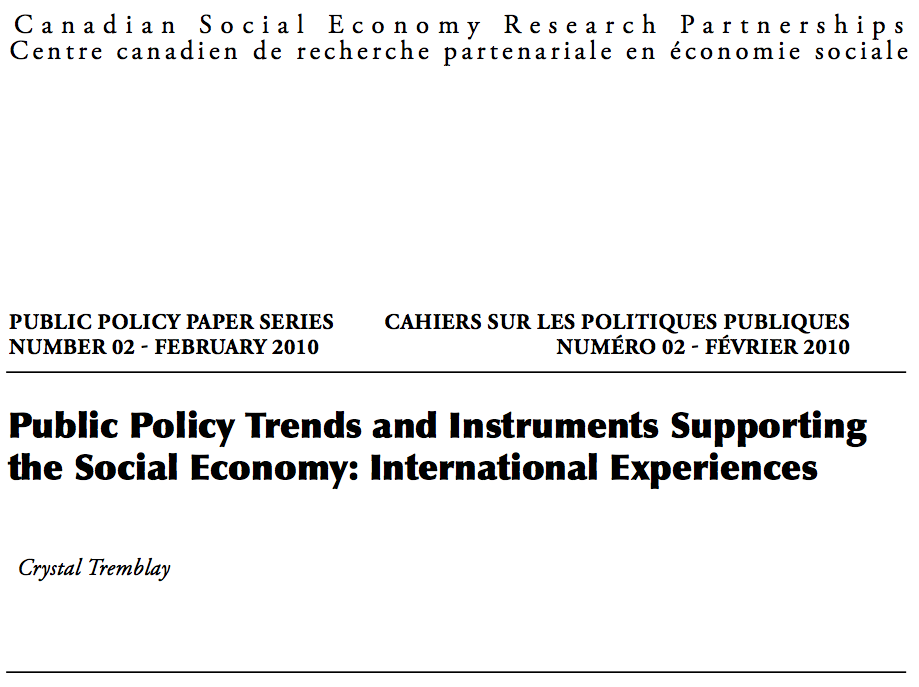The second paper builds on this literature review by focusing on the public policy instruments used to support the Social Economy in different jurisdictions. Specific policy instruments are identified that are being applied by governments to support the Social Economy in producing public policy outcomes that respond to the social, economic and environmental challenges they and their citizens’ face.
The paper reveals an important trend of governments’ greater recognition of how organizations of the SE have applied core ideas in order to achieve socio-economic development goals that are equitable and just. Analysis is also provided of the ways in which social economy actors are working together to “co-construct” public policy. One conclusion of the paper is that where governments have fragmented or non-explicit approaches to the Social Economy and there is a lack of cohesion and collaboration amongst its across, there has been greater difficulty to maximize outcomes. There are also some important examples of public policy development within Canada and in other countries that suggest material for discussion on the future of public policy on the social economy.
Read more
Download the PDF
Table of Contents
Acknowledgments
Abstract
Forward
1.0 Introduction: Building an Alternative Economy
2.0 Public Policy Trends and Instruments: International Examples
2.1 Cross-governmental Policies
2.2 Territorial Policies
2.2.1 Policy Domains
2.2.2 Conclusion
2.3 Tools for Development
2.3.1 Policy Domains
2.3.2 Conclusion
2.4 Sectoral Policies
2.4.1 Policy Domains
2.4.2 Conclusion
2.5 Supporting Disadvantaged Populations
2.5.1 Policy Domains
2.5.2 Conclusion
3.0 Indigenous Communities and the Social Economy
3.1 Australia and New Zealand
3.2 Canada
3.3 Mexico
3.4 United States
4.0 Conclusion
5.0 References





